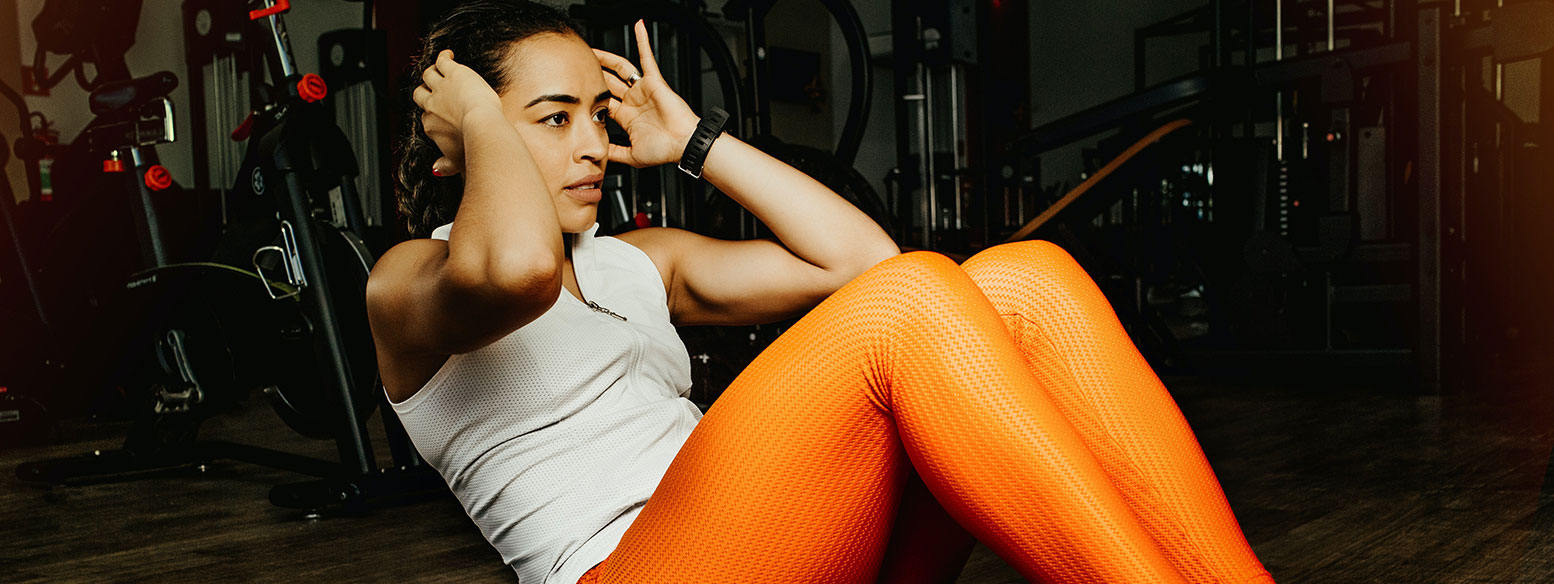E Exercise Techniques and Form
Building a Strong Core: A Comprehensive Guide to Core Strengthening Exercises
By
Beauty Doctor MD October 4, 2023

Introduction
A strong and stable core is not just about achieving that coveted six-pack; it’s essential for overall health and functional fitness. Your core muscles, which include the abdominals, lower back, and pelvis, serve as the foundation for nearly all body movements. Whether you’re lifting a heavy object, maintaining balance, or simply getting out of bed, your core is involved. In this comprehensive guide, we will explore the importance of core strength, delve into the anatomy of the core muscles, and provide a range of effective core strengthening exercises suitable for all fitness levels.

Why Core Strength Matters
Before we dive into the exercises, it’s important to understand why core strength is so crucial:
- Injury Prevention: A strong core stabilizes your spine and pelvis, reducing the risk of lower back pain and injury. It also aids in maintaining good posture, which can prevent musculoskeletal issues over time.
- Enhanced Performance: Whether you’re an athlete or simply want to excel in daily activities, a strong core is the key to improved performance. It enhances your balance, stability, and power.
- Better Posture: A strong core helps you maintain proper posture throughout the day, reducing the strain on your spine and preventing conditions like kyphosis and lordosis.
- Everyday Functionality: From bending down to tie your shoes to carrying groceries, your core muscles are essential for everyday movements. A strong core makes these tasks easier and more efficient.
- Improved Athletic Performance: Core strength is vital for athletes in virtually every sport, from running to weightlifting. It allows for more efficient movement and power generation.
Core Anatomy: Understanding the Muscles
To effectively train your core, it’s essential to understand the muscles involved. The core is not just about the “six-pack” muscles (rectus abdominis); it encompasses several muscle groups. Here are the primary core muscles:
- Rectus Abdominis: This is the superficial muscle layer often referred to as the “six-pack.” It runs vertically from the pubic bone to the ribcage and is responsible for flexing the spine (bringing your chest towards your hips).

- External Obliques: Located on the sides of the torso, the external obliques assist with flexing the spine and rotating the trunk. They also provide stability during activities like standing on one leg.
- Internal Obliques: Beneath the external obliques, the internal obliques have the opposite function—they help with rotation in the opposite direction and contribute to core stability.
- Transverse Abdominis (TVA): The TVA is a deep muscle that acts like a corset, wrapping around the abdomen. It plays a critical role in stabilizing the spine and pelvis, especially during movements like lifting and twisting.
- Erector Spinae: These muscles run along the length of the spine and help maintain an upright posture while also assisting with spine extension.
- Multifidus: The multifidus muscles are deep muscles that stabilize the vertebrae of the spine, helping to maintain proper alignment and preventing injury.
Now that you understand the core muscle groups, let’s explore effective core strengthening exercises:
Core Strengthening Exercises
- Plank
- The plank is a fundamental exercise that engages multiple core muscles, including the rectus abdominis, transverse abdominis, and erector spinae.
- How to do it:
- Start in a push-up position with your forearms on the ground.
- Keep your body in a straight line from head to heels, engaging your core.
- Hold this position for as long as you can while maintaining proper form.
- Tip: If you’re new to planks, start with shorter holds (e.g., 20-30 seconds) and gradually increase the duration as you get stronger.
- Russian Twists
- Russian twists target the obliques and are great for improving rotational core strength.
- How to do it:
- Sit on the ground with your knees bent and feet flat.
- Lean back slightly and lift your feet off the ground, balancing on your sit bones.
- Hold a weight or a ball with both hands, and twist your torso to one side.
- Return to the center and twist to the other side.
- Tip: Keep your back straight and chest lifted throughout the exercise.
- Bicycle Crunches
- Bicycle crunches work the rectus abdominis and obliques while also engaging the hip flexors.
- How to do it:
- Lie on your back with your hands behind your head and knees bent.
- Lift your head, shoulders, and upper back off the ground.
- Bring one knee toward your chest while simultaneously twisting your torso to bring your opposite elbow toward the knee.
- Alternate sides in a pedaling motion.
- Tip: Focus on bringing your shoulder blade off the ground and avoid pulling on your neck.
- Superman
- The Superman exercise targets the lower back and erector spinae muscles, helping to balance core strength.
- How to do it:
- Lie face down on the floor with your arms extended overhead and legs straight.
- Lift your arms, chest, and legs off the ground simultaneously, creating a “flying” position.
- Hold for a few seconds, then lower back down.
- Tip: Keep your gaze down to maintain proper neck alignment.
- Leg Raises
- Leg raises primarily work the lower abdominal muscles, including the transverse abdominis.
- How to do it:
- Lie on your back with your hands under your hips for support.
- Lift your legs off the ground, keeping them straight.
- Lower your legs toward the ground without letting them touch, then raise them back up.
- Tip: Keep your lower back pressed into the floor throughout the exercise.
- Dead Bug
- The Dead Bug exercise improves coordination and stability by engaging both the abs and lower back muscles.
- How to do it:
- Lie on your back with your arms extended toward the ceiling and knees bent at a 90-degree angle.
- Lower one arm and the opposite leg toward the ground, keeping your lower back pressed into the floor.
- Return to the starting position and repeat on the other side.
- Tip: Maintain a slow and controlled movement to avoid jerking or arching your back.
- Mountain Climbers
- Mountain climbers are a dynamic exercise that targets the entire core, including the rectus abdominis, obliques, and transverse abdominis.
- How to do it:
- Start in a push-up position with your hands directly under your shoulders.
- Bring one knee toward your chest while keeping your core engaged.
- Quickly switch legs, as if you’re “running” in place.
- Tip: Maintain a straight line from head to heels throughout the exercise.
Core Strengthening for All Levels
Whether you’re a beginner or an advanced fitness enthusiast, there are core strengthening exercises suitable for your level. Here’s how to tailor your core workout:
Beginners: If you’re new to core strengthening exercises, start with basic movements like planks and leg raises. Perform each exercise with proper form and focus on building endurance before increasing the intensity or complexity of the exercises.
Intermediate: Intermediate individuals can incorporate a variety of core exercises like Russian twists, bicycle crunches, and dead bugs. Gradually increase the number of sets and repetitions to challenge your core strength.
Advanced: Advanced individuals can add resistance to exercises or incorporate more challenging variations. For example, you can hold a weight during Russian twists or perform hanging leg raises for added difficulty.
Incorporating Core Exercises into Your Routine
To effectively incorporate core strengthening exercises into your fitness routine, consider the following tips:
- Frequency: Include core exercises in your workout routine 2-3 times per week. Consistency is key to building and maintaining core strength.
- Balance: Balance your core workout with exercises that target different areas of the core. This ensures overall strength and reduces the risk of muscle imbalances.
- Proper Form: Maintain proper form during each exercise to maximize effectiveness and reduce the risk of injury. If you’re unsure about form, seek guidance from a fitness professional.
- Progressive Overload: As you get stronger, progressively increase the intensity of your core exercises by adding resistance, increasing repetitions, or trying more challenging variations.
- Recovery: Give your core muscles time to recover between workouts. Adequate rest is essential for muscle growth and repair.
Conclusion
A strong core is not just about aesthetics; it’s the foundation for a healthy and functional body. By incorporating core strengthening exercises into your fitness routine, you can improve your posture, prevent injuries, and enhance your overall performance in both athletic and everyday activities. Whether you’re a beginner or a seasoned fitness enthusiast, there are core exercises suitable for your level. So, start building your core strength today and enjoy the benefits of a stable and resilient core for years to come.


